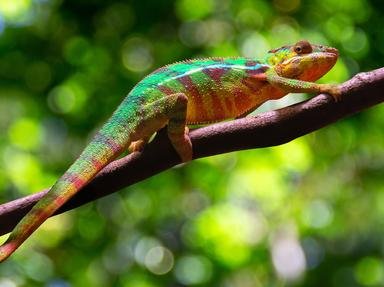Quiz Answer Key and Fun Facts
1. Sitting on the seal enclosure wall, a bystander took pictures of the Australian animals.
2. "Hot tarmac? Awful for the lions' paws, of course," remarked the zookeeper as a scarlet bird flew overhead.
3. The sausages were flaming on the grill at the cafe near the Exotic Birds section.
4. The gorilla made a beeline for the exit, but was caught by a keeper from the South American Animals section.
5. A camel and a kudu were wandering around the area where the African ungulates lived.
6. In the maze, Brazil nuts were scattered by a group of tourists to help them find their way out.
7. "We've lost Richard the rhino," reported the rhinoceros keeper. "That's OK," said a voice over the intercom, "we've corralled him in the Flightless Birds section."
8. Mac, a queer fellow, was found in the monkey house having a tea party.
9. The primate keepers found a small pot to put the big-eyed furry creature in.
10. Tam, a ring-tailed lemur, was found sitting on the head of a sleeping orangutan.
Source: Author
Kankurette
This quiz was reviewed by FunTrivia editor
spanishliz before going online.
Any errors found in FunTrivia content are routinely corrected through our feedback system.

